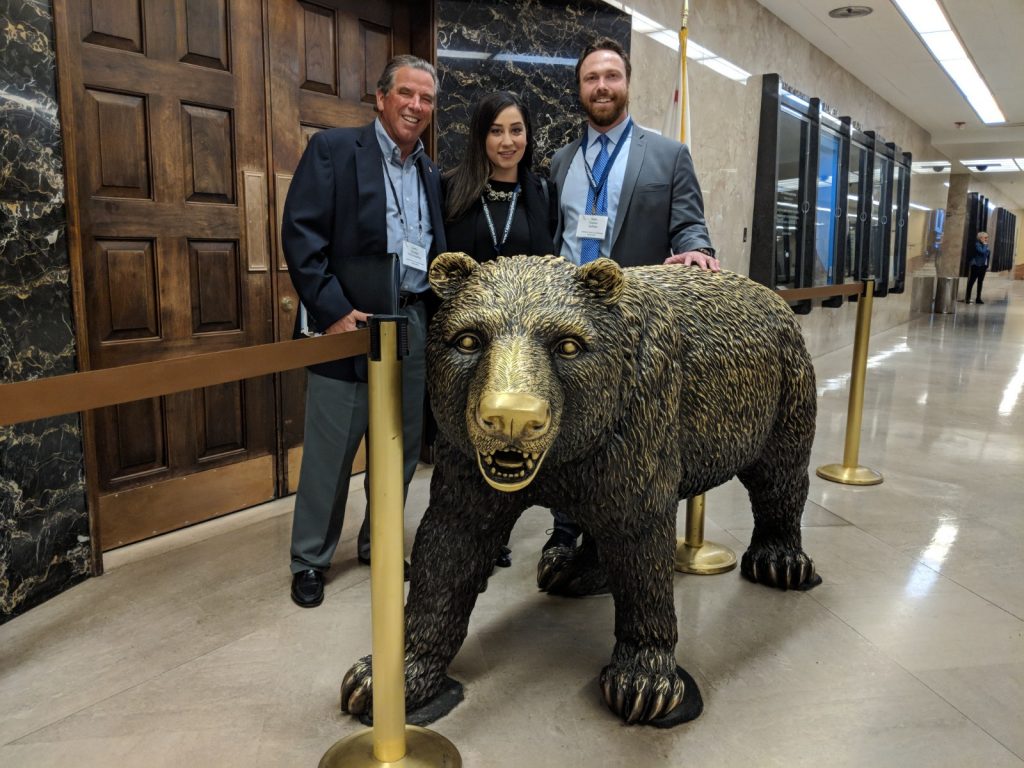Sacramento, CA — Rail officials and advocates, led by the California Short Line Railroad Association (CSLRA), gathered at the Capitol in Sacramento today to discuss California’s freight railroads, their role in moving the state and local economies, and current legislative proposals that would affect railroads at the state level.
California’s 26 freight railroads move millions of tons of freight each year, connecting California ports, businesses and customers with domestic and international markets. The state’s two Class I railroads, BNSF and Union Pacific, plan to collectively spend over $350 million in California on their infrastructure and operations in 2018, bringing their total investment in the state to just under $2 billion in the last five years.

The state’s many short line railroads, which are often locally owned and operated, are vital to the communities through which they operate. CSLRA discussed a number of state legislative issues today, including ACA 22, or the “Middle Class Fiscal Relief Act.” CSLRA opposes the proposal because it would represent one of the largest tax increases in the state’s history, adding to an already high corporate tax rate and discouraging corporations from locating in California, which would negatively impact most of CSLRA’s member companies.
“From San Diego to Shasta, from San Francisco Bay to the Sierra Foothills, short line railroads haul a wide variety of products: everything from imported goods in containers to agricultural products, lumber to petroleum products, and even passengers on a few tourist operations,” said CSLRA Executive Director Don Norton.
Freight rail is also fundamental to California’s flourishing intermodal industry, which ranks first for tons of intermodal cargo entering and exiting the state. Working in concert with California’s ports, trains reduce congestion and pollution while providing efficient and cost-effective connections for California’s goods movement industry. Without rail service, according to a 2017 report by the California Department of Transportation, container flows through the ports of Los Angeles and Long Beach would be reduced by 38 percent and truck traffic would increase by 44 percent.
Railroads’ private investments not only bolster efficiency across the network, they also enhance safety and promote the development and use of innovative new technologies. Ultrasound track technology, unmanned aerial vehicles (UAVs) and positive train control are just a few of the innovations railroads deploy to make a safe network even safer.
“At the core of California’s intermodal infrastructure is freight rail, which is also the nation’s only privately funded transportation mode,” said Nate Kaplan, California State Director for GoRail. “While many of our highways, waterways, runways and other publicly funded infrastructure have been starved for cash, freight railroads doubled down in recent years with record investments in track, equipment and technology to hold up their end of the intermodal bargain.”
California’s 26 freight railroads operate over 4,800 miles of track and employ 8,877 in the Golden State. Intermodal shipments comprise the majority of freight rail shipments both beginning and ending in California.


